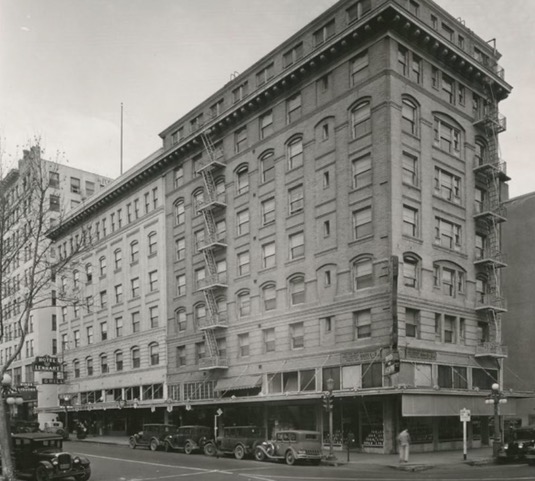Architect’s Corner: Preserving Our Historic Places
Due-Diligence Studies with Place-Based Considerations Are Key
by Melisa Gaudreau, AIA, associate principal & director, Page & Turnbull Sacramento

(Editor’s Note: Melisa Gaudreau, AIA, is associate principal and director of the Sacramento office of Page & Turnbull, a national architecture and preservation firm with four California offices that also include San Francisco, Los Angeles, and San Jose. Gaudreau has more than 20 years of experience at Page & Turnbull working on a wide range of rehabilitation projects requiring insight and application of the Secretary of the Interior’s Standards. She was recently named to the Board of the American Institute of Architect/Central Valley.)
Historic preservation is more than the protection of historic features and their significance. Preservation is a conversation about what is architecturally and culturally significant and reimagining the role that historic buildings can play in strengthening the future of a community.
An important way to ensure the best possible outcomes for historic properties is by conducting a due-diligence study at the early stage of a proposed project that incorporates place-based evaluation criteria. Whether the preservation work relates to noteworthy architecture, historic sites, or modest places, a study that factors in locally significant values of place, history, and community can provide another lens to view what’s at stake. This type of assessment supplements more routine studies with important place-based criteria.
A due-diligence study of an existing property may address a range of issues to assess and determine an appropriate scope for a project that meets desired goals and expectations. The study may include a survey of existing conditions, historic features, necessary repairs for stabilization or continuing use, necessary upgrades to allow for an expanded range of uses and occupancies, test-fit scenarios, project cost analysis, or ongoing maintenance analysis. Addressing these and other issues in a study early in a planning phase can inform critical decision-making. These evaluations provide data to an owner’s team and can shape the design direction.

For some historic preservation or rehabilitation studies, however, it is especially important to account for regional influences. Projects that address public spaces, for instance, or activities that may affect established neighborhoods, cultural traditions, or under-represented histories should almost always include a wider scope of observations and considerations in a project analysis. Place-based factors can offer further insights and may include the following aspects.
Public Imprint & Patterns Of Use
At a local or regional scale, the project’s relationship to patterns established in a neighborhood, a community, or a wider setting is worth understanding. Project teams can identify how patterns are reinforced with local design guidelines, city or regional general plans, or applicable environmental regulations that denote shared values. Teams can also consider how the project fits into observable patterns in the built or natural landscape that are less prescriptive but exist, such as circulation patterns, gathering zones, points of reference, view corridors, natural systems, or edges that restrain use.
For a project with the California Department of Parks and Recreation, Page & Turnbull studied how best to incorporate a new building within a popular historic district on the riverfront in Old Sacramento State Historic Park. Beyond an analysis of historic character, scale, massing, materials, and other architectural aspects common to new building studies, the client and local constituents were clear that the work should fit well with established public uses and informal exterior circulation patterns in the district. There was a strong desire to incorporate open spaces in the project with covered walkways, courtyards, and passageways for linkages, exploration, and gatherings. These open space elements would connect with and extend existing networks and community interaction, well-loved aspects of this historic district that were not immediately apparent. In this case, connections of exterior spaces were just as critical as the architectural building itself and key to a project that would gain community support. Therefore, an analysis of planning options gave higher priority to the opportunity for open space and connections with the proposed project.
Community & Invested Value
A local community’s invested value in a building or district may warrant special recognition in a due-diligence study. Places that may not be a listed historic landmark but have strong associations to a regional historic context or shared experience deserve a closer look. A good study will review the significance of these associations and merits to their preservation, for the long-term benefit of a community, its identity, and its pride. Perhaps a corner store, a local business storefront, or a meeting hall would fall into this category, as a place that anchored events or everyday happenings that shaped a community’s history.
The process of researching and understanding such properties may not be through standard academic sources, particularly with under-represented populations. For studies conducted relating to settlements of Asian American, Pacific Islander, or African American communities in California, Page & Turnbull’s team relied heavily on local leaders, public outreach, and community workshops for true insights into storied places. Addressing the underlying meaning of such specific buildings has been essential to conveying the full history of the resources, and thus the value they hold to sustaining a local culture.
Local Industry & Development
Major buildings and facilities that support, or once supported, large industries driving the growth of cities are typically well documented. More granular systems are less appreciated yet can have extended importance to a region and worth our attention. In California, especially the Central Valley, the impact of the agricultural industry on a region may be highly influential, even as it reconfigures into new forms. Page & Turnbull found, during an early study of a family-owned dairy farm, the significance of the complex lay not only in its role in dairy production, but also its innovative and efficient layout that was replicated in farms throughout the region. The spirit of agricultural innovation and a deep respect for the environment is a point of pride for the community, highlighted today by a rich offering of educational programs, public tours, and wildlife monitoring at the dairy farmstead site. Insights into the culture of the farmstead and driving motivations, in addition to architectural design, can provide a more meaningful contribution to an understanding of the place and its future.
The articulation of place-based considerations during the early assessment stages of a project can reveal underlying aspects of value placed in communities. This is a fitting extension of preservation practice as we reflect on ways to revive historic environments while maintaining what is significant to shared history. If project teams broaden the study early in the design process and engage with more nuanced aspects of a locality, it can both inform good decision-making while boosting community involvement and support.